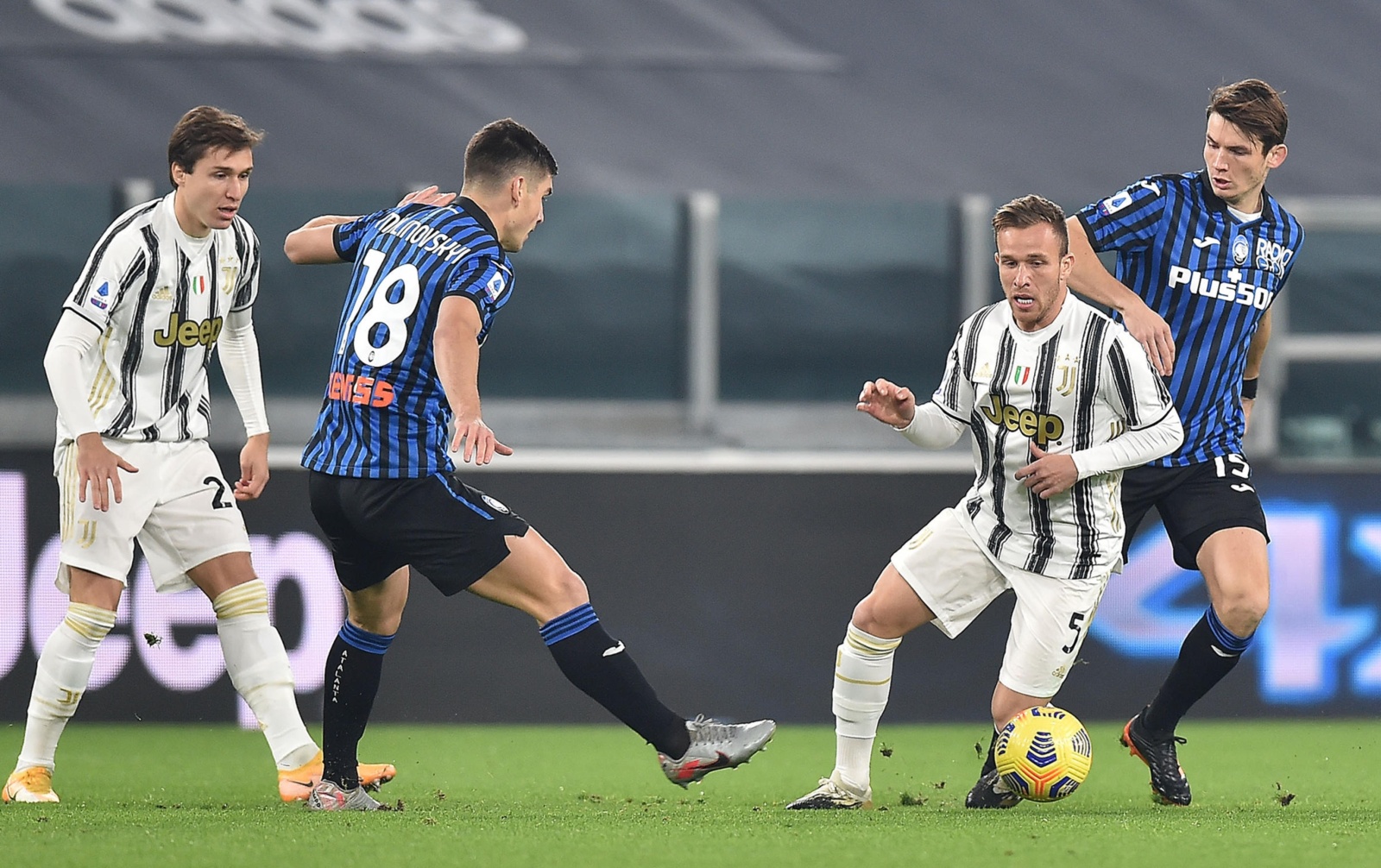In Round 12 of Serie A, Atalanta traveled to Turin in the hope of ending their 31-year long drought against Juventus on their home soil. But the long wait continues for Gian Piero Gasperini’s men, who had to come from behind and were lucky to seal a point in the end, with Cristiano Ronaldo missing his first penalty of the season.
A draw did no good for either team, with Juve failing to close the gap at the top and Atalanta drifting away from a precious Champions League spot.
This tactical analysis will break down the key playing patterns of both teams.
Starting Lineups and Formations

The starting lineups and formations of both teams were contradicting each other, with Andrea Pirlo opting for a 4-4-2 set-up with a double pivot in midfield, whereas Gasperini stuck to his principles of playing with a back three.
Although from the first look Juventus’ seemed to go with a 4-4-2, in possession Pirlo’s men often shifted to a back three system, with Matthijs de Ligt, Leonardo Bonucci and Danilo forming the backline. This meant that Juan Cuadrado, who formally started the game as a right-back, had the licence to push on further up the field to play as a right wing-back. Consequently, Weston McKennie moved infield and operated as a third or supportive forward for Alvaro Morata and Ronaldo. On the other side, Federico Chiesa was deployed as a left wing-back, with Danilo rarely joining the attack.
In contrast, Gasperini went with a standard 3-4-2-1 set-up, consisting of a back three of Berat Djimsiti, Cristian Romero and Josè Palomino. Additionally, Hans Hateboer and Robin Gosens, both crucial players in Gasperini’s system, were deployed as wing-backs, with Marten de Roon and Remo Freuler forming a double pivot. Matteo Pessina was Atalanta’s only real playmaker in this game, as Ruslan Malinovskyi occupied a role of the second striker in support of Duvan Zapata.
Juventus’ Offensive Principles: Strikers Dropping Deep and Manipulation of Atalanta’s Man-to-Man Marking
It would be fair to say that the style of play propagated by Juventus revolves around possession. However, it is not quite a possession-based football we have all been accustomed to over the years. The Old Lady are the Serie A leaders for having the largest quantity of ball possession among all 20 teams (57.9%); however, Pirlo’s team utilizes it in a more vertical and direct manner compared to the majority of other possession-based sides, whose game is heavily based on sideways and backwards passing.
Additionally, Juventus are second in the league for progressive passes per 90 minutes (42.0) and passes into the final third (38.8). In contrast, Sassuolo, who possess the second-highest percentage of ball possession in the Serie A (57.8%), are only tenth for progressive passes (31.7) and seventh for the final third passes (30.7).
All of the above indicate that Juventus are not afraid of playing more risky passes that are less predictable for the opponent and can often result in chance creation. In last night’s game, they did this trick multiple times, especially when Atalanta were imposing their man-oriented high press deep in the Juventus half. In the graphical image displayed below, Juventus are being pressed man-to-man high up the pitch by Atalanta, which somewhat forces the home team to play a long ball in behind the opposition’s backline deep in their half.

A very similar situation is presented below, with two Atalanta players man-marking Bonucci and Arthur. Although this time, Gasperini’s men retrieved to a mid-block and invited the opposition to carry the ball deeper into the midfield third, all the main passing lanes were blocked, presenting de Ligt with only one possible option to play a long ball over the top of Atalanta’s defense. In this instance, it worked well with Morata getting to the ball first and in behind Atalanta’s backline.


Another occasion when Juventus did opt for a long ball tactic is illustrated below. As we can see, the whole midfield trio is man-marked by Atalanta’s midfielders, which invites Bonucci to play a long ball over the top into the path of Morata. It is important to note that throughout the game, Atalanta’s backline often pushed high up the pitch, which enabled Juventus forwards to make runs in behind.


Most teams that do want to play on a front foot tend to hold a relatively high defensive line, which allows to squeeze the opposition and counter them afterwards if the ball is won back quickly. As mentioned above, Atalanta did exactly that for most parts of the game, which is perfectly illustrated in the graphic below.

Nonetheless, along with a tactic of playing long balls over the top, Juventus’ other tactical plan saw strikers, predominantly Morata, dropping deep into midfield in order to pull Atalanta’s center-backs all over the place. Such an approach can be described as a manipulation of the man-to-man marking system, where defensive players have to follow their direct opponents wherever they go.
The perfect illustration of what was described above is presented in the image below. In this situation, Morata drops deep into midfield to collect the ball from one of Juventus’ center-backs, thus dragging out Atalanta’s center-back of his original position. Now, Atalanta’s backline is stretched out, which leaves plenty of space between other defenders that can be easily exploited by Juventus’ forwards.

Consequently, Juve found themselves 4 against 4, with an opportunity to exploit Atalanta’s incredibly high defensive line.

Another example of such tactical maneuver is presented below. In this instance, Morata once again drops deeper into midfield, with his back to the goal, dragging Atalanta’s center-back out of his position, which creates space in behind for McKennie. However, this time, the Spaniard was too slow to turn and did not see the run of his American teammate.

Juventus repeated this tactical maneuver time and time again during the whole 90 minutes. Solid hold up play by Morata and Atalanta’s at times incredibly high defensive line allowed Juve to breakthrough into good positions. As a result, the current Serie A winners created 5 big chances in a game, but they managed to miss all of them.



In this game, Morata played an integral part in Juventus’ offensive build-up process. The 28-year-old Spaniard had 61 touches, a remarkable statistical metric for a center-forward, completed 19 passes (70% accuracy), of which 2 were key passes, and created 1 big goal-scoring opportunity. However, despite his crucial involvement in a build-up play, Morata missed 3 big chances that could have easily secured Juve all three points.

Although Juventus did manage to play the ball in behind Atalanta’s backline time and time again, resulting in a good number of big scoring opportunities, the high defensive line heavily restricted Juve from entering the final third areas more frequently. Consequently, despite having 54% ball possession, Pirlo’s men played only 48 passes into final third, in comparison with Atalanta’s 118, and played only 102 balls in attacking zones, whilst the visitors did almost twice as many (199). Juve’s limited concentration of play in Atalanta’s final third is illustrated in the image below.

Atalanta’s Offensive Play: Possession in Final Third but Little Penetration
Over the last couple of seasons, Atalanta have been renown for their fluid and incredibly attacking style of play, involving a great deal of movement and player rotations. One of the key facets of Atalanta’s possession-based football is their intention to always drive forward by creating overloads and passing triangles.
However, all of the above was extremely lacking in Atalanta’s positional play last night. Despite making 118 passes into final third, in comparison with Juventus’ 48, even though the home team had more ball possession, and 199 touches in final zones of the pitch (97 more than Juve), Atalanta managed to create only one big scoring opportunity during the entire game. Out of 15 shots, only 6 tested Wojciech Szczesny’s reactions (40% accuracy), in what was a rather disappointing night for Gasperini’s men.
Atalanta’s struggles in the final third are perfectly illustrated in the first few images below. We can see how Gasperini’s men took advantage of a 4 against 3 overload on the right side by playing the ball out of tight space. However, immediately after the ball reached the final third area, Atalanta were left stuck, with Pessina unable to find a penetrative pass due to lack of movement upfront from Zapata.


A very similar situation can be observed in the graphical annotations below. At first, Atalanta successfully shifted the ball from the center to the right side, having four players involved in a build-up play with space in front of them. But then again, Atalanta hit a great wall of Juventus, with midfielders arriving late to the highlighted area.


Below we can see one more example of Atalanta’s positional play principle of overload and underload. After creating a five-man build-up on the right flank, they swiftly shifted the ball across to the opposite flank, where Zapata occupied Juventus’ right-sided defenders, thus creating space to carry the ball into more advanced positions. Nonetheless, after smooth ball transition from one side to another, Atalanta’s move broke down on the edge of Juventus’ final third zone. The visiting team found themselves in a 4 against 4 situation and could not penetrate the final ball.


Intricate player rotations involving as many players in a build-up process as possible can sometimes be disadvantageous. We can see such an example in the illustrations below, with Atalanta neatly working their way out of Juventus’ traps on the left side. Atalanta’s main center-forward Zapata played a key role in this instance, but due to his involvement in the build-up phase, the visitors were left with nobody in the central zone.


The following scenario was one of the very few occasions when Atalanta did manage to exploit gaps between the defensive and midfield lines of Juventus. In this case, Gosens played the ball into the feet of Pessina, who for once found himself in behind Juventus’ midfield and played a delightfully waited pass into the path of Zapata. It was Atalanta’s only big chance of the game, valued at 0.32 xG (expected goals).
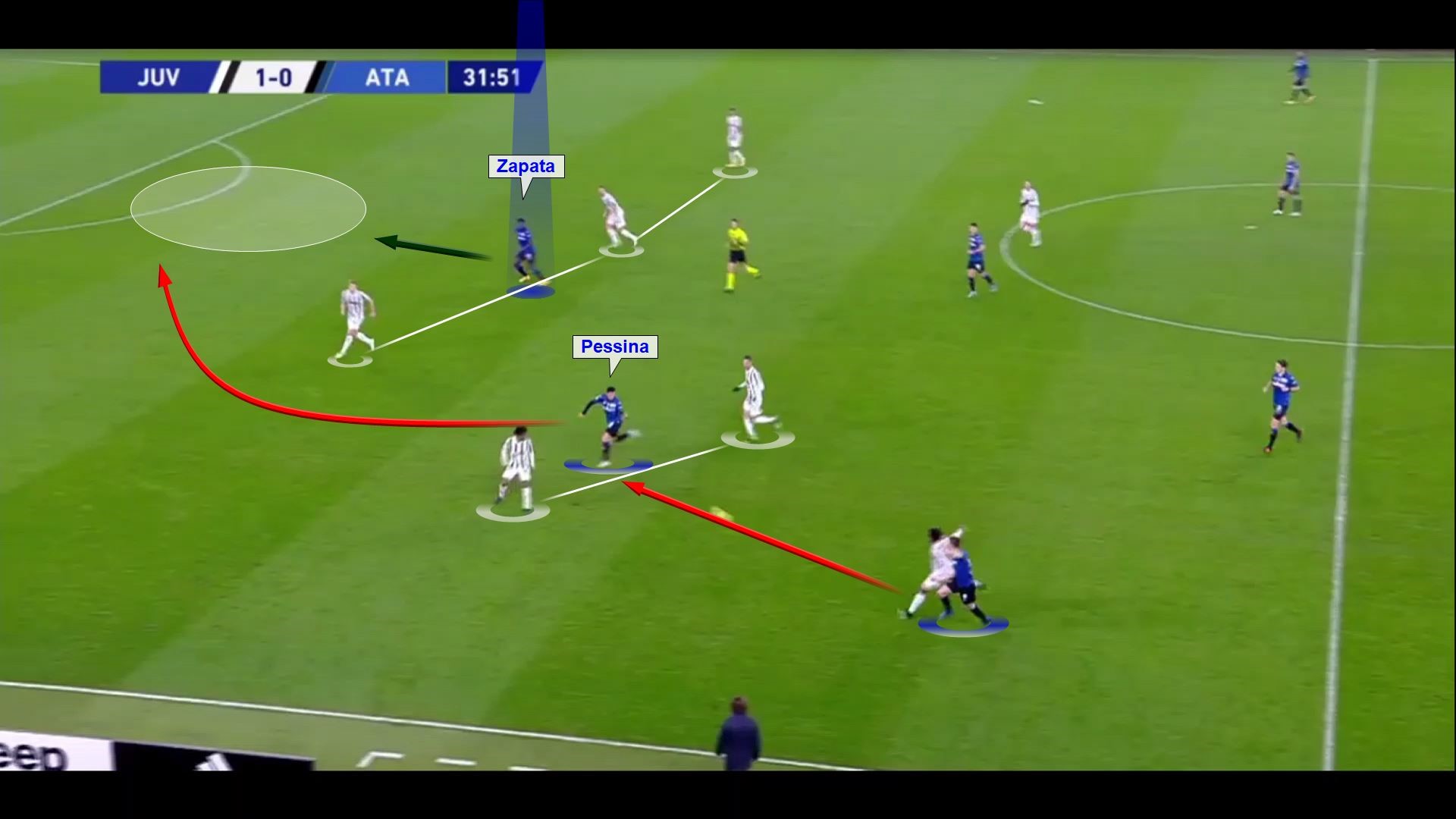
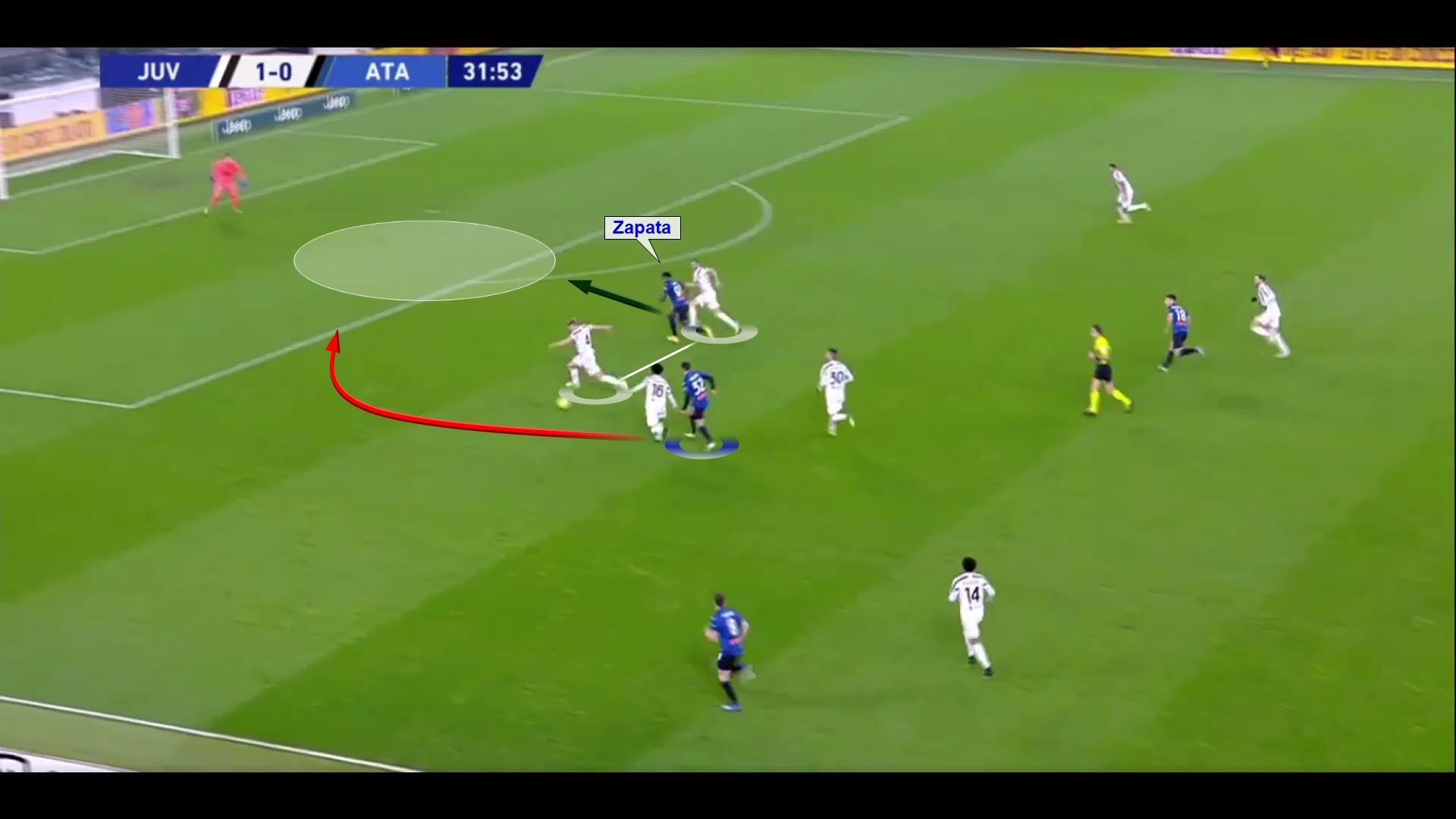
The full picture of Atalanta’s performance is perfectly displayed in the graphic below. As we can see, out of 199 touches in the final zones of the pitch, 161 of those were performed in the second to last zone. Consequently, Atalanta had 38 touches in the top zone, of which only 18 were in the penalty box. In contrast, Juventus had 22 touches in the opposing penalty area out of 102 in total, which is nearly two times fewer compared to Atalanta.
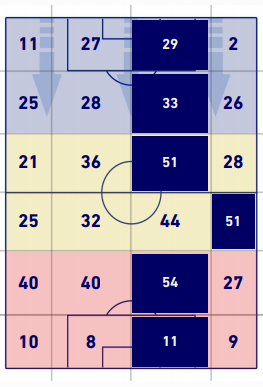
Shot Map of Both Teams
xG (expected goals): Juventus 2.89 – 0.98 Atalanta
Result: Juventus-Atalanta 1-1
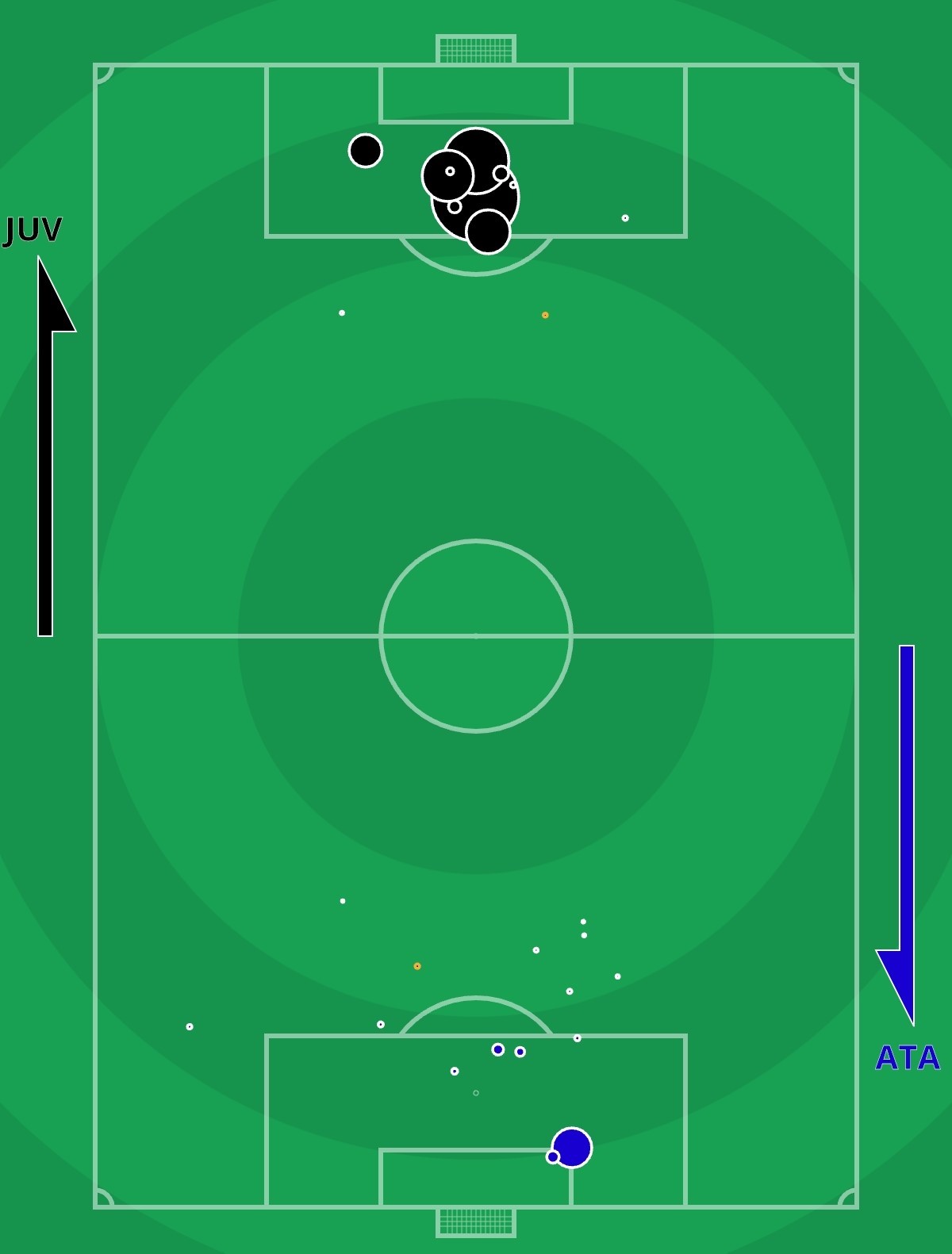
Conclusion
To sum it up, based on the chances created and expected goals metric, Juventus had to come away with all three points. Although the Bianconeri were not as dominant as you would expect from the reigning champions, Atalanta were toothless in big parts of the game and did not threaten Juve at all. Glaring misses from Morata and a missed penalty from Ronaldo eventually made Juventus pay.

